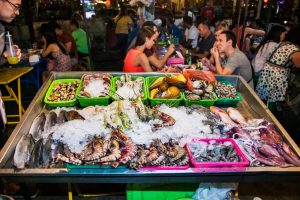On 5 April 2022, WHO was notified of 10 cases of severe acute hepatitis of unknown cause in children under the age of 10 years across Scotland. As of 5th of May, more than 200 cases have been confirmed in 17 countries, mostly in the United Kingdom, Europe and America. However, it seems like this phenomenon has been observed in Asia too, with 1 recent case in Japan, 1 in Singapore and 3 in Indonesia. Patients range from 1 month to 16 years old. 17 children have required liver transplants, and at least 4 deaths have been reported – 3 of them in Indonesia. In Singapore, a 10-month-old baby was diagnosed with acute hepatitis over the weekend.
Hepatitis is the medical term referring to an inflammation of the liver. In children, is usually caused by infections by the hepatitis virus A, B, C, D, and E. Alcohol, certain toxins, and some autoimmune conditions can also cause hepatitis in the adult population. However, most of the children in this outbreak do not have the aforementioned virus or risk factors. So what do we know about this mysterious disease so far?
What are the symptoms of Hepatitis in children?
The liver is one of the most important organs in our body responsible for multiple key functions.
- Metabolism of fats, protein and carbohydrates
- Regulates sugars for energy production and storage
- Vitamin and mineral store
- Production of bile for digestion
- Removal of toxins and waste products from blood
- Regulation of blood clotting
- Albumin production
In children, especially toddlers, symptoms of liver disease can be unspecific and require close monitoring from parents. Here are some things to look out for:
- Yellowing of skin/eye white (jaundice)
- Generalized itchiness
- Dark-colored urine
- Light-coloured stool
- Abdominal pain/discomfort
- Diarrhoea
- Nausea and vomiting
- Loss of appetite or refusal to eat/drink in toddlers
- Fever
- Fatigue
Is it related to COVID or COVID vaccination?
There have been online speculations that COVID could be the culprit of this mysterious hepatitis outbreak. So far, only 20 children among the 169 confirmed cases have an active COVID infection. Meanwhile, WHO has reported that “hypotheses related to side effects from the COVID-19 vaccines are currently not supported” as most of the affected children have not received COVID-19 vaccinations yet.
What are the possible causes?
So far, the most probable hypothesis is that one strain of the adenovirus: type 41, is the main culprit. It has been detected in nearly half of the confirmed cases. However, what puzzled scientists is that adenovirus 41 does not usually cause hepatitis unless the host is immunocompromised. Adenovirus usually causes gastroenteritis but hasn’t been known to results in anything more serious. The theory also does not explain the clinical situation for those without detected adenovirus 41.
There are multiple types of known adenoviruses. Types 3, 4 and 7 are associated with respiratory illness. Eight, 19, 37, 53, 54 can cause keratoconjunctivitis – a type of eye inflammation. Types 40 and 41 are known to cause gastroenteritis in children.
More research is desperately needed to confirm the exact cause of this hepatitis outbreak.
Management of Hepatitis in Children
So far, WHO has recommended testing of blood, serum, urine, stool, and respiratory samples, as well as liver biopsy samples when necessary. Viral sequencing should also be carried out in each case to identify the cause.
Parents are advised to bring their children to local hospitals as soon as symptoms start to appear. Though there is no specific antiviral treatment for adenovirus, hospitalised children should undergo symptomatic management. The hospital team would usually closely monitor patient’s body fluid status and end organ function to prevent hepatitis associated comorbidities. In sudden and severe liver failure, transplant is considered and could be prioritised in paediatric cohort.













